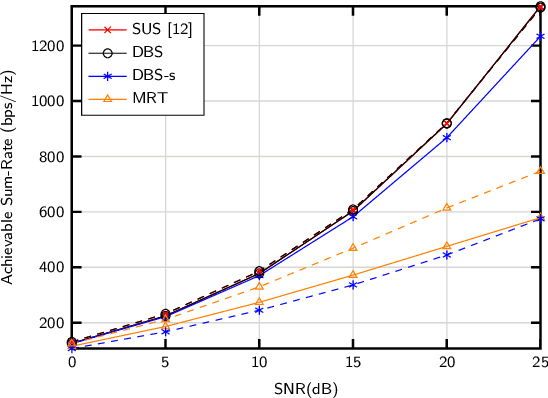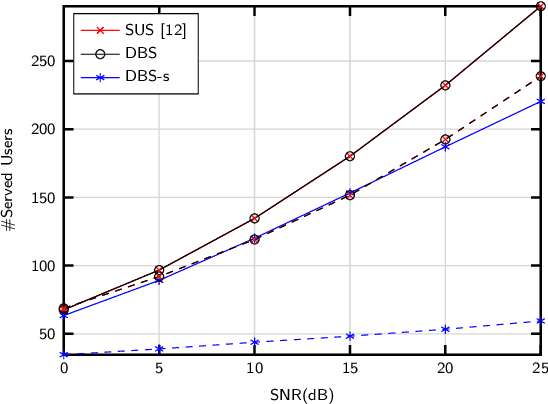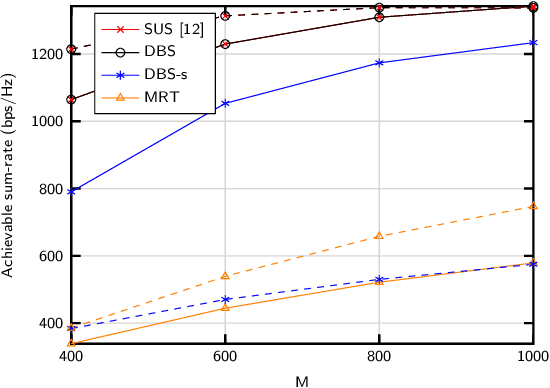Low-Complexity Distance-Based Scheduling for Multi-User XL-MIMO Systems
Paper and Code
Apr 28, 2021



We introduce DBS, a new technique for user selection in downlink multi-user communications with extra-large (XL) antenna arrays. DBS categorizes users according to their equivalent distance to the antenna array. Such categorization effectively accounts for inter-user interference while largely reducing the computational burden. Results show that (i) DBS achieves the same performance as the reference zero-forcing beamforming scheme with a lower complexity; (ii) a simplified version of DBS achieves a similar performance when realistic spherical-wavefront (SW) propagation features are considered; (iii) SW propagation brings additional degrees of freedom, which allows for increasing the number of served users.
* This work has been submitted to the IEEE for possible publication.
Copyright may be transferred without notice, after which this version may no
longer be accessible
 Add to Chrome
Add to Chrome Add to Firefox
Add to Firefox Add to Edge
Add to Edge